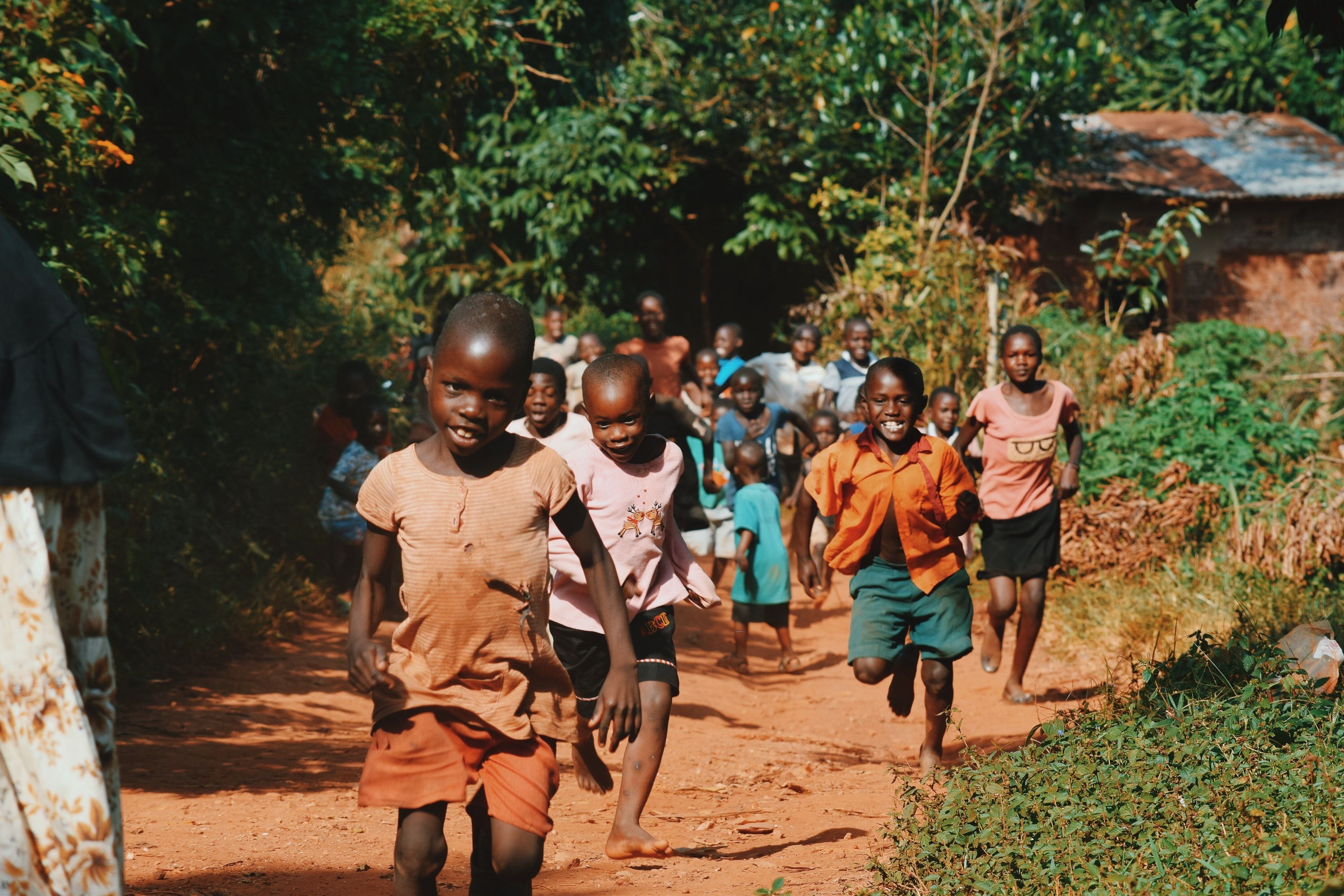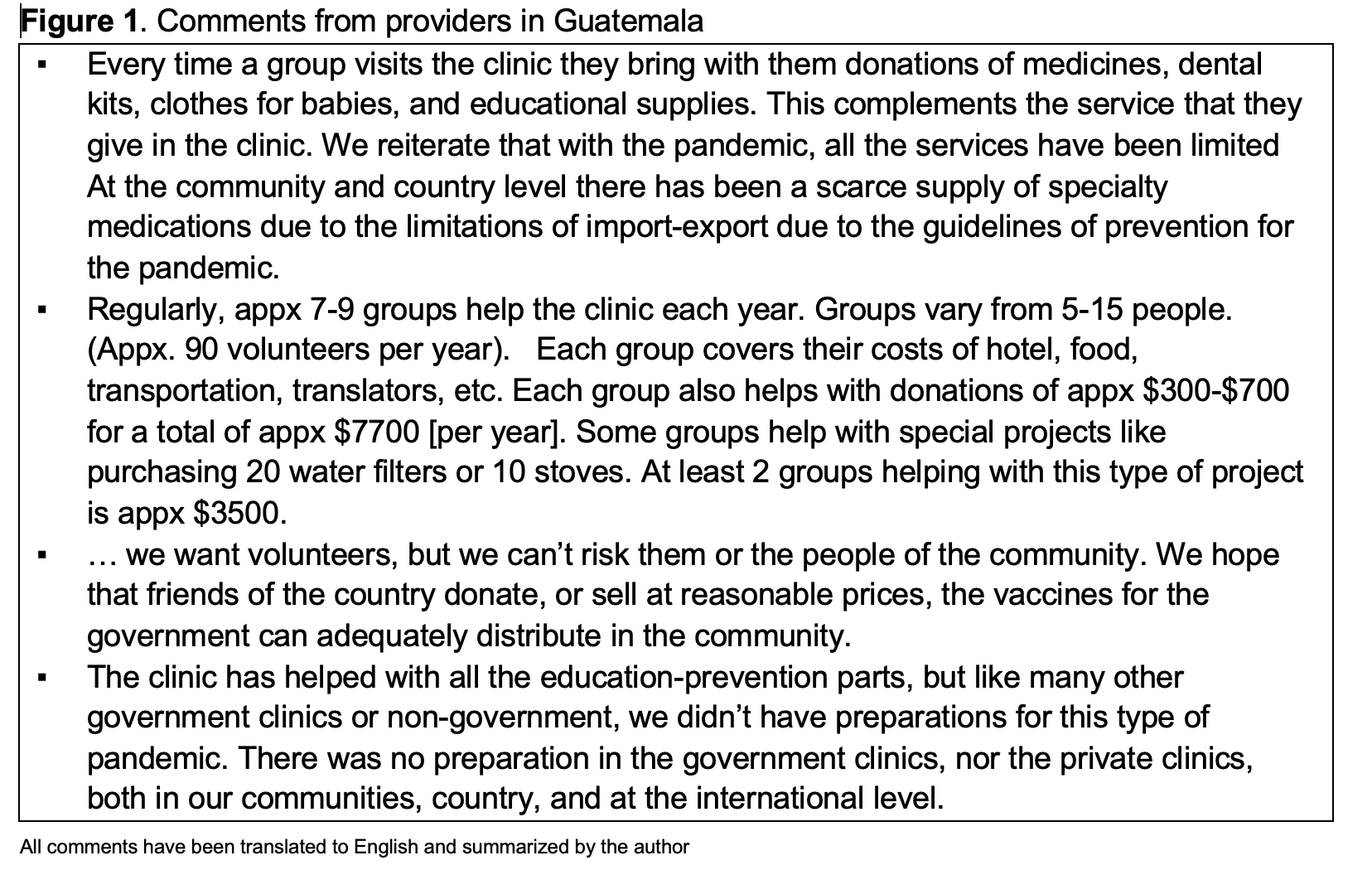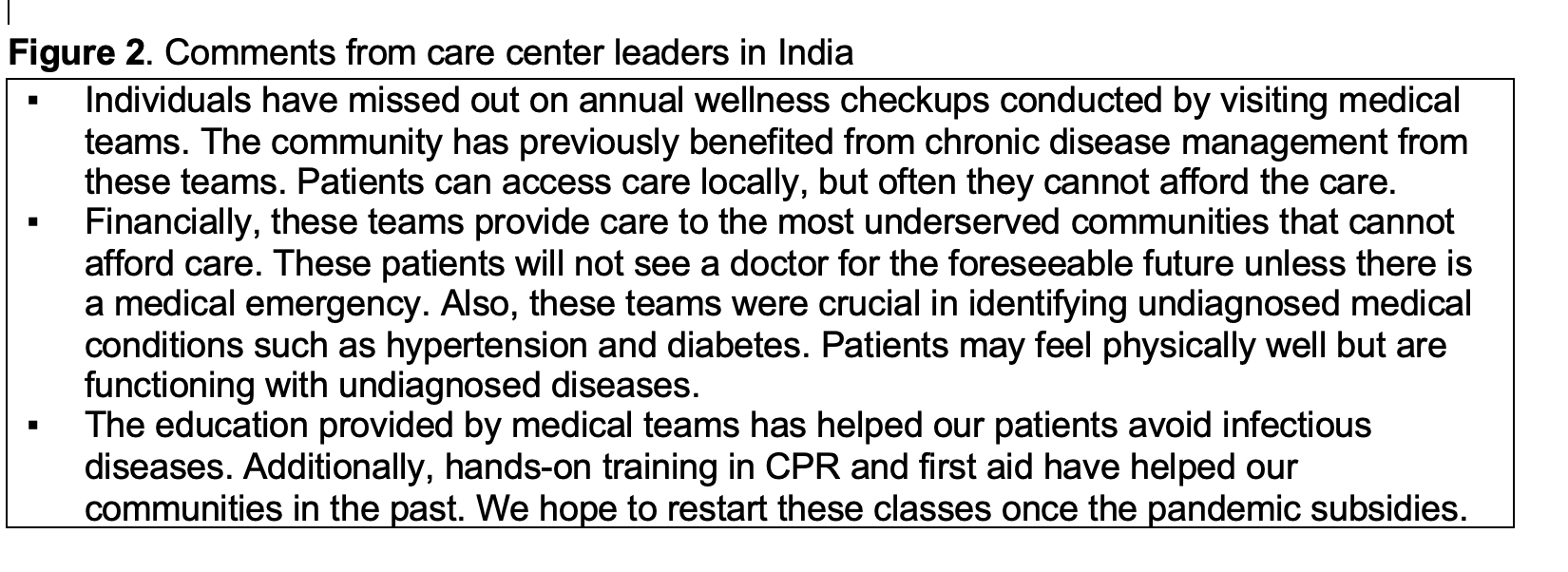Assisting With International Health Care Needs
Although the pandemic halted many medical mission assignments, these opportunities and others are becoming available to help those geographic areas with acute needs.

Medical work in resource-limited locations is an avenue for the health care community to share their expertise across the world. This work is often short term; held over a 1 to 2-week period. Teams typically comprise a group of medical professionals who travel to underserved parts of the world. Specialized teams can also comprise one particular specialty, such as dentistry to a special type of care like cleft palate surgeries.
This work takes place locally and internationally.1 Models of care include pop-up clinics where the team travels to remote locations and set up clinics in temporary tents or local civic buildings.2 Additional models include partnering with local clinics and hospitals to see patients through scheduled appointments. These visits can provide primary care needs such as physicals, general patient exams, and chronic disease management. This model of care has created a channel for international medical aid and the global sharing of medical information.3 These efforts have ultimately led to powerful lessons learned on the universality of the human condition and how quality collaboration brings healing.
The Need for Short Term Medical Care
The benefits of these trips go both ways. For the team traveling to the area in need, providers learn about ways to provide care with minimal resources. Additionally, they can learn firsthand about intercultural communication and disease states not typical to their place of practice. Health care provider trainees can also see procedures and medical care that they would not usually see in their practice sites.4
The patients receive crucial medical care that they may otherwise be inaccessible. Additionally, funds and resources shared during these trips often equip the hosts for the rest of the year. Health care providers hosting these visiting teams also benefit from sharing and receiving medical expertise from visiting teams.
Pandemic
The global pandemic halted access to resource-limited settings. Many, if not all, short-term medical trips were canceled because of health and safety concerns. In the short run, these hard stops were to keep all parties safe. Many hospitals and clinics in resource-limited settings may rely on volunteers to maintain their daily operations, so not only did the pandemic have a direct effect on healthcare, but there was also fewer personnel to care for patients and fewer medical supplies being donated or brought by volunteer teams. An article published in 2020 described the implications of a lack of global surgical outreach. While some groups that provide medical care can potentially still contribute via telemedicine, surgical teams cannot do so for obvious reasons. The authors concluded that perhaps surgical teams could use this time to reflect on the goals and objectives of their global outreach and develop new ways to provide care in the future.5
Other groups who have historically provided surgical care wrote a letter to the editor of the Burns journal describing their setbacks. These were members of the non-profit organization “Doctors Collaborating to Help Children” who commented that the global pandemic significantly impacted their work. While telemedicine is an attractive option, they said that it has challenges such as the inability to perform a physical exam, conduct a procedure, and language or social barriers.6
One of the authors historically led short-term medical work with pharmacy students in Guatemala. The university determined that all such experiences would not be allowed to continue during the pandemic for the safety of faculty and students. She spoke with the organization they typically work with (Woodland Public Charity) about the direct effect on their clinic in Panajachel, Guatemala. The responses of the nurses who run that clinic are summarized in figure 1.

Additionally, an assistant professor of pharmacy at Texas A&M College of pharmacy who typically leads medical work in resource-limited settings in Texas has said that the university conducted no short term medical work in 2020 due to the pandemic and that they just started (in the Summer of 2021) being able to provide services again. They conducted Operation Lonestar and Operation Health and Wellness in South Texas this year. Those events included health screenings, vaccinations, medication reviews, and medication dispensing, in conjunction with military health care workers. They hope to offer more health care, including COVID-19 vaccine outreach along the gulf coast of Texas.
Lastly, individuals from a care center in India were asked about the impact of visiting medical teams. They state that the medical teams provided crucial annual checkups, among other services. They hope that once the pandemic subsides, the teams will return so that the most underserved patients are given medical care. See figure 2 for additional insights from the individuals interviewed.

How to Help Now
It is challenging to help countries outside the US due to import/export limitations and travel restrictions. Conducting patient visits via telehealth platforms is one solution but has many issues. As stated previously, not only do healthcare workers provide direct care to patients, but teams who travel to international destinations bring medical supplies and medications with them. Patients may not have access to laboratory tests, either due to convenience or cost, and may not be able to obtain necessary medications. While telehealth visits have been helpful in the US, they may not have as much utility in an international setting.
Here are some ways to assist:
- Ask for ways to help virtually via virtual meetings/training sessions
- Make donations
- Be available for clinical questions
- Trips during the pandemic (meeting most acute needs - administering vaccines domestically in resource-limited settings)
Looking Ahead
The landscape of health care will never be the same after the pandemic subsides. Health care providers across the country face severe burnout and question their career priorities. But we firmly believe that medical trips to resource-limited settings will be able to restart in full force in the future. The world would be bereft without the innovation and global care that comes from collaborating teams worldwide. Therefore, with that hope in mind, how should the healthcare workforce prepare to go back on short-term medical trips? There will be a significant amount of changes to face amongst the traveling and receiving teams.
Health care providers have experienced trauma while caring for the public during a pandemic. Teams headed on medical trips may want to consider ways to mutually address caregiver burnout. There may need to be a refocus of care toward mental health and wellbeing. This could look like an interdisciplinary team intentionally created to address both the physical and mental wellbeing of patients and health care providers.
The world has focused on public health and how this interfaces with the rest of life through this pandemic. Teams may need to focus on education related to public health topics such as vaccine hesitancy, virology, self-care, and mental health. This may require a re-evaluation of who joins the team. Perhaps practitioners with dual degrees or training in clinical health care and public health may provide the care the host teams so desperately need.
One more consideration to discuss is the gap in primary care the host communities will face. Practitioners may need to re-evaluate how to address a longer list than usual of disease states that have led to health deterioration. Lack of access to quality medications may also exacerbate chronic diseases. Patients who had previously worked to manage chronic disease states may have regressed simply because of the lack of access to medications and expertise that these teams bring. Additionally, there may be an increased number of previously undiagnosed disease states. Further, other diseases kept at bay by annual healthcare tests may include extensive de-worming and removal of other parasites such as head lice.
In conclusion, medical work in resource-limited settings is crucial to the success of global health progression and care for underserved communities. All practitioners involved benefit from idea sharing and serving these communities. As the world faces a pandemic that has prolonged a long time past the expected timeframe, the healthcare world needs to be creative about supporting global healthcare. Lastly, the foray back into the medical world will bring new challenges in the realm of burnout public health and chronic disease management.
Figure 3. Comments on a telebrigade experience by Reina Puri, PharmD
USciences Global Medical Brigades chapter was scheduled for an in-person brigade to Panama in May 2020 but due to unprecedented circumstances all in-person brigades were suspended. Global Medical Brigades uses a holistic model to meet community health and economic needs, and is almost entirely funded through volunteers’ funds and donations. Due to the pandemic, volunteers could not actively participate to make a difference in urban and rural communities. To continue to ensure people living in communities with limited access to care and healthcare professionals, Global Medical Brigades implemented telebrigades. Medical Telebrigades through GMB are week-long opportunities where students can virtually participate in medical clinics in a developing country. Students have the opportunity to shadow local doctors through a secure telemedical consultation with patients from the respective community. Students have the opportunity to interact with Community Health Workers and are empowered to make sustainable changes in the respective community’s health.
In May 2021, the USciences Global Medical Brigades chapter participated in the first evervirtual brigade on behalf of the university. The virtual brigade consisted of various sessions composed of educational lectures and interactive sessions directly with community healthcare professionals and patients.
Session 1: In the first session, students were introduced to the concept of in-person brigades and how the pandemic gave rise to telebrigades. Volunteers learned about the factors that are accounted for when selecting communities for brigades, and applied those skills to assess the needs of different communities.
Session 2: A Honduran doctor helped students learn about major differences in healthcare practices between the US and Honduras. This doctor helped students understand the different healthcare structures within the country, and how the current system hinders access for all patients.
Session 3: Volunteers directly engaged with Community Health Workers through a virtual platform. Students got to hear the stories of CHW and what motivated them to learn medical practices to better serve their community. Despite the language barrier, students and CHW were able to interact with one another to learn from each other. Students were truly inspired by all the commitment and dedication CHWs had despite their limited educational backgrounds.
Session 4: The Honduran doctor and translator helped prepare students for the virtual urban and clinic days. The mock clinic helped students practice Spanish phrases that would later be used when talking directly to the patients during the consultations.
Sessions 5-6: Live urban clinics with different stations. The first station was the triage station where doctors and students both asked the patient preliminary questions regarding CC, PMH, allergies, FH, and medications to better assess why the patient came into the clinic. The second station was the consultation room where doctors assessed and diagnosed the patient. Due to language barriers, during the interaction the doctor would translate what the patient was saying and would explain the medical terms, diagnoses, conditions, and procedures for students to better understand the encounter. The last station was the pharmacy where patients received specific medications after the consultation with the doctor. Students engaged with a Honduran pharmacist to learn about pharmacology and how access to medications/prescriptions differ from the US.
Session 7: Due to limited technology, the rural clinic was not live but students watched a recorded interaction from this clinic day. Volunteers observed how patients in urban and rural clinics had different levels of health literacy, and how this impacted overall understanding and access to care.
Session 8: Community service project where volunteers were responsible for creating an educational video in Spanish about chronic illnesses. USciences students created a video about diabetes as this is one of the more prevalent disease states people in the respective community are diagnosed with. This video will be used in future brigades to help community members understand a common disease state and empower them to take control of their own health! https://drive.google.com/file/d/198SRkBOqZZXbCP160zqEtb9TJS9A4QLA/view?usp=sharing
Initially there was some hesitation about implementing virtual brigades, but overall this was a rewarding experience. Volunteers were still able to directly engage and interact with medical professionals, patients, CHW through virtual platforms. Many of the students felt inspired and were motivated to continue serving communities with limited resources and access to adequate medical care. Attending and participating in either in-person or virtual brigades is a rewarding experience for volunteers. These opportunities allow students to expand their cultural competency while allowing implementations of sustainable practices in specific communities. Despite the challenges, the pandemic has forced us to endure, we are grateful for this experience and the skills/knowledge we have acquired from this brigade.
References
- Mishra K, Jessel S, Lurie J, Pryor KO, Kaur G. Academic Medical Missions – Reaching Those in Greatest Need? Ann Glob Health. 2019;85(1):126. doi:10.5334/aogh.2651
- Oliphant JB. Short-Term Medical Missions Done Well: What Every Sponsoring Institution Should Understand. J Physician Assist Educ. 2018;29(1):58-61. doi:10.1097/JPA.0000000000000182
- Nina VJ da S, Farkas EA, Nina RVAH, Marath A. Humanitarian Missions: a Call for Action and Impact from Cardiovascular Surgeons. Braz J Cardiovasc Surg. Published online 2017. doi:10.21470/1678-9741-2017-0197
- Short-Term Medical Service Trips: A Systematic Review of the Evidence | AJPH | Vol. 104 Issue 7. Accessed April 19, 2022. https://ajph.aphapublications.org/doi/10.2105/AJPH.2014.301983
- Effect of Coronavirus Disease 2019 and Pandemics on Global Surgical Outreach | Facial Plastic Surgery | JAMA Otolaryngology–Head & Neck Surgery | JAMA Network. Accessed April 19, 2022. https://jamanetwork.com/journals/jamaotolaryngology/fullarticle/2767784
- Fuzaylov G, Dabek RJ. Adjustment for international surgical outreach missions due to COVID-19. Burns. 2021;47(4):964-965. doi:10.1016/j.burns.2020.07.016
